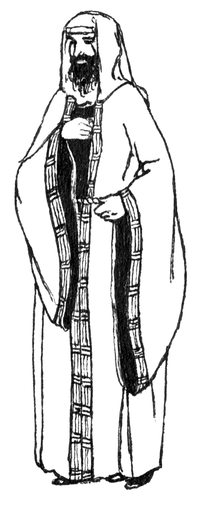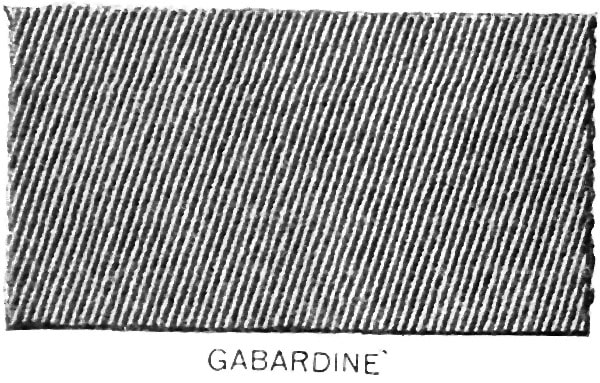|
If your pattern calls for "gabardine" fabric, what is it, exactly, that you need? When we talk about fabrics, we usually describe them by fiber, fabrication (weave, knit, felt?), and finish. We don't always use these in a predictable order, though. For example: sueded silk charmeuse (FINISH/FIBER/WEAVE) wool flannel (FIBER/FINISH) cotton twill (FIBER/WEAVE) cotton/spandex jersey (FIBER/FIBER/KNIT) polyester crinkle chiffon (FIBER/FINISH/WEAVE) The term "gabardine" is a little slippery, though, since it can encompass both fiber and fabrication. THE WORD The word "gabardine", as near as etymologists can tell, started in Middle High German as "wallevart", meaning "pilgrimage". Pilgrims often wore long, shapeless overcoats, which were practical in that they concealed purses and weapons, and served as blankets, but "wallevart" may not have meant the garment at first. The sounds morphed as the word "wallevert" was taken into Middle French as "galverdine" and into Spanish as "gabardina", and it's here that it got its sense of an overcoat, probably influenced by the pre-existing Spanish words "tabardina" and "gabán", meaning overgarments or cloaks. Various spellings are attested in different languages at times: in English, gaberdine/gabardine/gawbardyne/gawberdyne/gabarden/gaberdin/gabberdine; in French, gaban/gauvardine/galvardine/gallevardine; in Spanish gabardina. THE HISTORICAL GARMENT
BURBERRY'S TWILL
THE CLOTH TODAY
But just to confuse the matter, some manufacturers put out plainweaves or satin weaves of the same weight wool as their gabardine, and call them "plain gabardine" or "satin gabardine". At this point, it seems to be the weight and durability of the fabric, not the weave, that matters. But only for wool, as far as I know: I've never seen a plain woven poly or cotton called a gabardine. So, if your pattern says it's suitable for "gabardine", you should look for a wool or polyester (or some blend thereof) twill, medium weight, tough, and similar to what men's uniform pants might be made of. WORKS CITED https://www.etymonline.com/word/gaberdine
Great British Brands 2018. "Burberry." Country & Townhouse LTD. Pg. 78.
3 Comments
The Sister
1/13/2020 12:12:16 pm
I can't for the life of me remember which of three songs I know that uses this word, and it's driving me mad! But anyway, thanks for getting three tunes in my head! :D . ;)
Reply
The Sister
1/22/2020 08:48:36 am
YES! Thank you! Leave a Reply. |
Karen Roy
Quilting, dressmaking, and history plied with the needle... Sites I EnjoyThe Quilt Index Categories
All
Archives
March 2024
|



 RSS Feed
RSS Feed